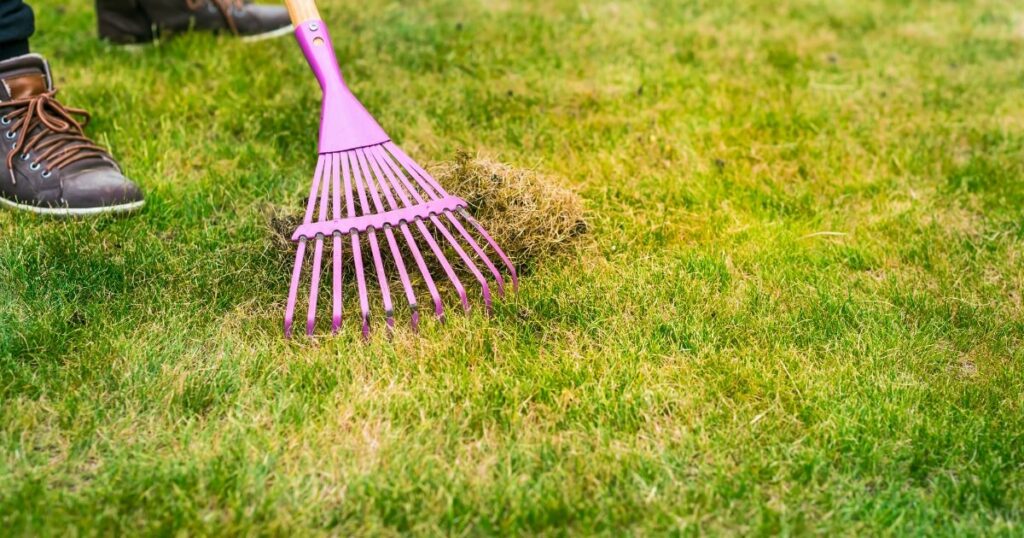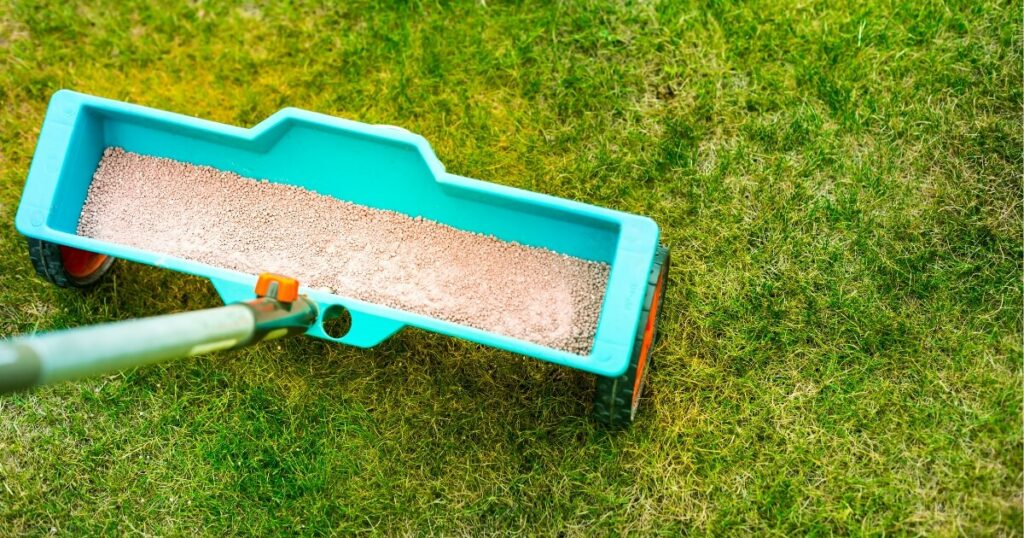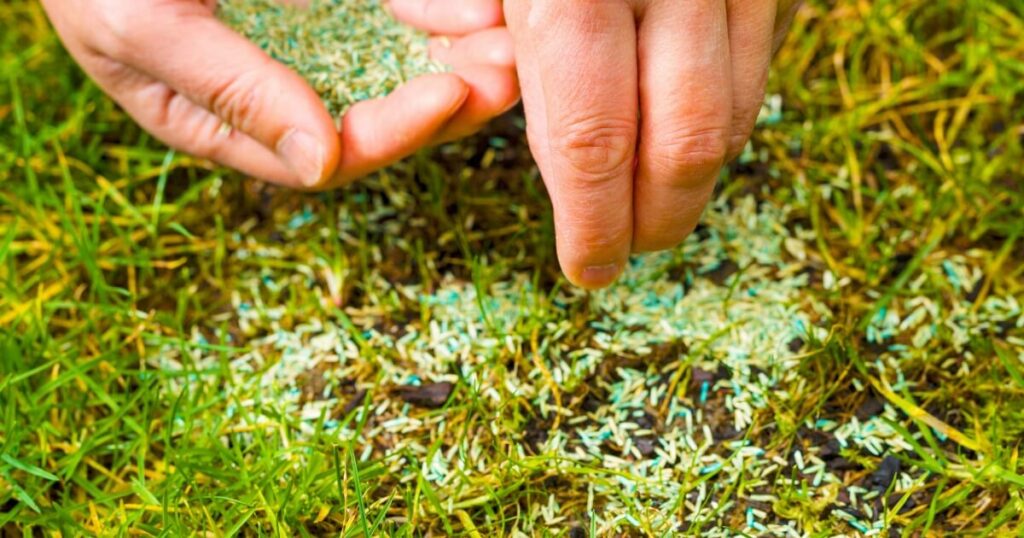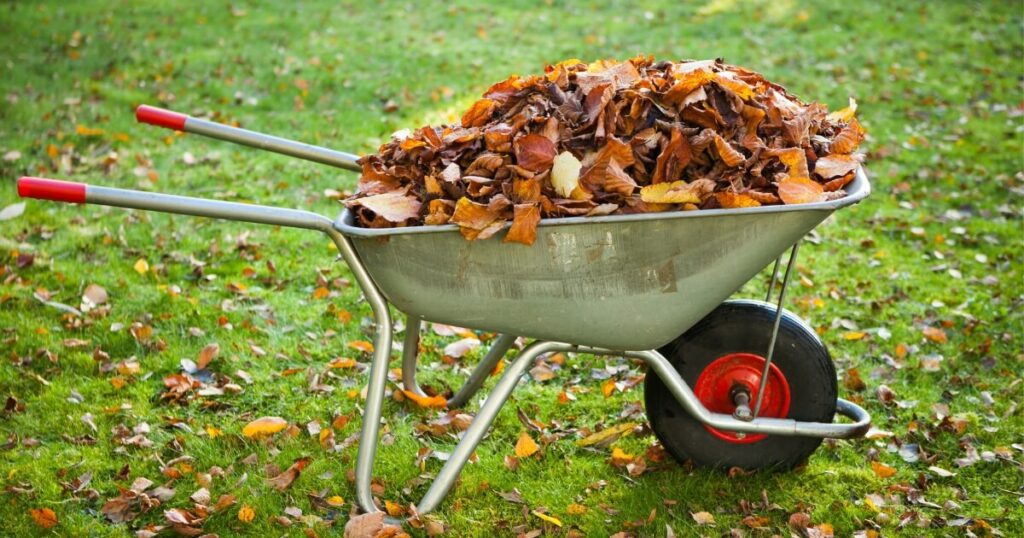Seasonal lawn care is about understanding that your grass has different needs as the seasons change.

Let’s explore how you can adjust your lawn care routine to accommodate the shifting demands of each season, ensuring a healthy, green lawn come summer.
Spring Lawn Care
Assessing Lawn Health Post-Winter
After the snow melts and the frosty air gives way to spring breezes, it’s time to thoroughly check your lawn.
Look for areas that seem damaged or sparse.

Check the thatch, too. If it’s thicker than half an inch, your grass might struggle to breathe and absorb nutrients.
Don’t overlook soil compaction, especially in high-traffic areas. Compacted soil can hinder root growth and should be addressed pronto.
Lawn Cleanup
Now grab those gloves because it’s cleanup time!
Clear away any twigs, leaves, or debris that have gathered over the winter months.
This not only tidies up your lawn but also prevents mold and disease from taking hold. Plus, removing dead grass opens up space for new growth.
Aeration and Overseeding
Aeration is your next move if you’ve spotted compaction or excess thatch.
This process involves making small holes in the soil to let air, water, and nutrients reach grass roots more effectively.
Pair aeration with overseeding, sprinkling new grass seeds over existing areas to fill in bare patches and enhance your lawn’s density.
Fertilizing
Choosing the right fertilizer in Spring sets you up for success throughout the year.

Opt for a slow-release nitrogen formula to kickstart growth without overwhelming your young grass. Remember to follow package instructions closely because too much of a good thing can backfire.
Mowing
As growth accelerates, so does mowing frequency. Start with your mower blade set high because cutting too short too soon can stress out new grass shoots.
The goal is to trim just the top third of the grass blades each time you mow. This encourages stronger roots and helps crowd out pesky weeds.
With these steps, you’re well on your way to cultivating a resilient and thriving lawn ready for summer’s heat!
Summer Lawn Care
Watering Practices
Hydration is key during the sizzling summer months. Your lawn needs a lot of water to keep cool and hydrated.
Aim for deep, infrequent watering sessions early in the morning to reduce evaporation and give your grass a long, refreshing drink. This boosts deeper root growth, which helps your lawn find moisture even on hot days.
Mowing Strategies
Again, raise the mower blade in summer to leave grass taller to provide shade for the soil and reduce water loss.

Stick to cutting no more than one-third of the blade height at a time to keep stress low.
Dealing with Weeds and Pests
Unwanted guests can crash your lawn party during summer. Stay vigilant and scout for weeds regularly, removing them before they go to seed.
As for pests, watch for telltale signs of damage or discoloration.
A balanced approach using eco-friendly products can manage these intruders without harming beneficial insects or the environment.
Heat Stress Management
When temperatures soar, your lawn might start showing signs of heat stress, such as wilting or discoloration.
Here’s where smart care comes into play. Avoid fertilizing during peak heat periods since it can burn stressed grass. Also, limit foot traffic on the lawn to prevent additional strain.
Fall Lawn Care
Preparing for Dormancy
As the days grow shorter and the air cooler, your lawn prepares for its winter nap. It’s essential to support this transition to dormancy with proper care.
Start by gradually lowering the height of your mower with each cut, allowing the grass to adjust slowly. This is also a great time to apply a potassium-rich fertilizer that strengthens root systems against frost and cold.
Aeration and Overseeding (if not done in Spring)
Fall presents another prime opportunity for aeration, especially if you skipped it in Spring. Aerating your lawn allows it to breathe easily before it settles into dormancy.

Follow up with overseeding, choosing cool-season grass varieties that thrive in lower temperatures. This one-two punch revitalizes your lawn, filling in thin spots and promoting vibrant growth for next year.
Fall Fertilizing
Select a fertilizer formulated specifically for fall use. These typically have higher levels of potassium to aid in root development and disease resistance.
Timely application helps your grass store essential nutrients, giving it a head start when spring rolls around.
Final Mowing and Cleanup
As autumn wanes, give your lawn one last tidy mow to help prevent matting and mold growth under snow cover.

Rake up fallen leaves or mulch them with your mower. Left unchecked, they can smother your grass and invite pests or diseases.
Clearing away debris also minimizes hiding spots for rodents which might otherwise damage your lawn during winter.
By focusing on these fall care steps, you’re essentially tucking your lawn in for a good night’s rest, ensuring it wakes up refreshed come springtime.
In Summary
Seasonal lawn care is about staying one step ahead of Mother Nature’s mood swings.
You’re the medic in Spring, assessing damage and revitalizing your turf. Come summer, you morph into a hydration guru, keeping your lawn quenched and cool. Fall rolls around, and you become a strategist, preparing your green canvas for the quieter winter months.
Remember that these tips are a starting point. Your local climate and specific type of grass might need tweaks to this routine.